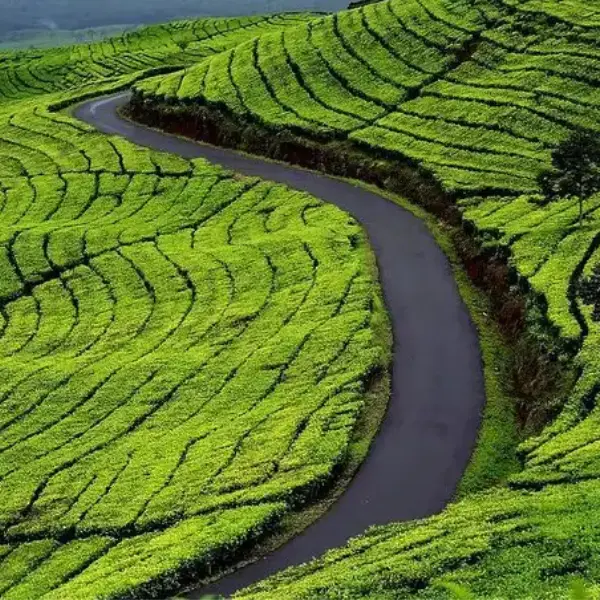Jakarta, the capital city of Indonesia, is not directly home to any volcanoes. However, the city is situated within a geologically active region known as the Pacific Ring of Fire, where numerous active volcanoes exist. These volcanoes have shaped Indonesia’s landscape and continue to impact the environment, air quality, and safety of Jakarta. This article explores the Jakarta volcano, their historical eruptions, and their influence on the capital city.
The Pacific Ring of Fire and Jakarta’s Geological Context
Indonesia is part of the Pacific Ring of Fire, an area known for frequent earthquakes and volcanic eruptions. This region is home to over 130 active volcanoes, making Indonesia one of the most volcanically active countries in the world. While Jakarta itself does not have a volcano, several significant volcanic formations exist in its proximity, influencing the city in various ways.
Notable Volcanoes Near Jakarta
Although Jakarta does not have an active volcano within its city limits, several volcanoes in the surrounding regions pose potential impacts on the city. Some of the most notable ones include:
1. Mount Pangrango
Mount Pangrango is a dormant stratovolcano located approximately 80 kilometers south of Jakarta. Standing at 3,019 meters, its peak, Mandalawangi, is the second-highest in West Java. The mountain is part of the Gunung Gede Pangrango National Park, a UNESCO Biosphere Reserve, which boasts rich biodiversity and serves as a vital water catchment area for surrounding regions, including Jakarta.
2. Mount Gede
Adjacent to Mount Pangrango is Mount Gede, another prominent stratovolcano. Together, they form a twin volcanic complex. Mount Gede has a history of eruptions, with the most recent significant activity recorded in the 20th century. The fertile volcanic soil around these mountains supports extensive agriculture, contributing to the local economy.
3. Mount Galunggung
Located in West Java, about 180 kilometers southeast of Jakarta, Mount Galunggung is an active stratovolcano. The most notable eruption occurred in 1982, with a Volcanic Explosivity Index (VEI) of 4. This eruption caused significant ash fall, leading to disruptions in air travel. Two Boeing 747 passenger jets flying downwind of the eruption suffered temporary engine failures and exterior damage, forcing emergency landings in Jakarta.
4. Mount Merapi
Though situated in Central Java, Mount Merapi’s activity has implications for regions beyond its immediate vicinity. As one of Indonesia’s most active and hazardous volcanoes, its eruptions have historically affected air quality and air travel across Java, including Jakarta. The 2010 eruption, for instance, disrupted flights and prompted disaster response measures nationwide.
5. Anak Krakatoa
Anak Krakatoa, meaning “Child of Krakatoa,” is a volcanic island that emerged in 1927 from the caldera formed by the cataclysmic 1883 eruption of Krakatoa. Located in the Sunda Strait between Java and Sumatra, its activity is closely monitored due to its potential to trigger tsunamis, which could impact coastal areas, including Jakarta. The 2018 eruption led to a deadly tsunami, highlighting the ongoing threats posed by volcanic activity.
How Volcanic Activity Affects Jakarta
While Jakarta is not immediately adjacent to these volcanoes, their activities have periodically influenced the city in various ways:
1. Air Quality Issues
Eruptions, especially those ejecting significant ash plumes, can deteriorate air quality in Jakarta. Volcanic ash contains fine particles that can cause respiratory issues, prompting authorities to advise residents to wear masks and take precautions.
2. Disruptions to Air Travel
Volcanic ash poses severe risks to aviation, as it can damage jet engines and reduce visibility. Airports in Jakarta have faced temporary closures or flight reroutes during major eruptions to ensure passenger safety. The 1982 Mount Galunggung eruption serves as a critical example of how volcanic ash can impact air travel.
3. Economic Impacts
Disruptions in transportation, agriculture, and air quality can affect businesses, tourism, and daily life in Jakarta. A severe eruption could lead to significant financial losses due to delays, cancellations, and health risks.
Cultural and Historical Significance of Volcanoes in Indonesia
Volcanoes are deeply embedded in Indonesian culture and mythology. Many communities around these volcanoes engage in rituals and ceremonies to honor the spirits believed to inhabit the mountains. This reflects a blend of indigenous beliefs, Hindu-Buddhist influences, and Islamic traditions.
- Folklore and Legends: Stories of volcanic eruptions have been passed down through generations, often portraying volcanoes as powerful forces of destruction and renewal.
- Art and Literature: Volcanoes feature prominently in traditional music, dance, and literature, symbolizing both creation and destruction.
Monitoring and Preparedness for Volcanic Activity
Given the volcanic risks, Indonesia has established a robust monitoring system. The Center for Volcanology and Geological Hazard Mitigation (PVMBG) actively monitors volcanic activity and provides early warnings. Jakarta, as a major urban center, benefits from these systems to mitigate potential impacts from distant volcanic events.
The Indonesian government has also invested in disaster preparedness strategies, including:
- Early warning systems for communities at risk.
- Evacuation plans in case of significant volcanic activity.
- Public awareness campaigns to educate residents about safety measures.
Conclusion
While Jakarta does not have any volcanoes within its immediate vicinity, the city’s environment, public health, and infrastructure are periodically influenced by volcanic activity from surrounding regions. Understanding these dynamics is crucial for effective disaster preparedness and resilience planning.
As Indonesia continues to develop its monitoring and disaster management strategies, Jakarta remains on alert for the potential indirect effects of volcanic activity.

